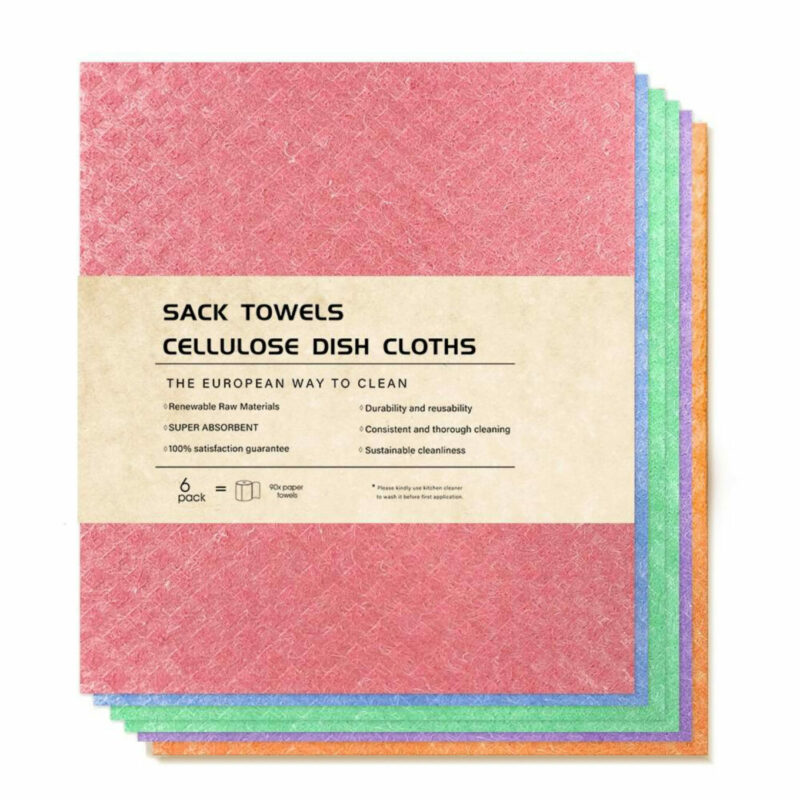Blog
How To Clean Cellulose Sponges
How To Clean Cellulose Sponges? Are your cellulose sponges starting to smell funky or look grungy? It’s time to give them a good cleaning!
At our house, we use cellulose sponges for everything from washing dishes to wiping down countertops. They’re versatile and affordable, but they do require some regular maintenance to keep them in top shape.
In this article, we’ll show you how to clean your cellulose sponges using simple materials you probably already have on hand. We’ll provide step-by-step instructions and offer some tips for keeping your sponges fresh between cleanings. Plus, we’ll share a few signs that it’s time to replace your sponges altogether.
By the end of this article, you’ll know exactly how to care for your cellulose sponges so they can keep serving you well in all kinds of household tasks.
Why Clean Your Cellulose Sponges?
You’ll want to clean your cellulose sponges because they can harbor bacteria and unpleasant odors if not properly maintained.
Over time, sponges accumulate food debris and moisture, which create a breeding ground for microorganisms. When you use a dirty sponge to clean dishes or surfaces, you may inadvertently spread harmful germs that can make you sick.
In addition to hygiene concerns, dirty cellulose sponges can also affect the performance of cleaning tasks. Saturated with old food particles and grease, the sponge may become less effective at scrubbing away grime or absorbing spills.
By regularly cleaning your cellulose sponges, you can ensure that they remain in good condition for longer periods of time and effectively do their job without posing health risks.
Materials Needed for Cleaning
To get started, all you need are a few basic items that most households already have on hand. You’ll need some dish soap, white vinegar, and warm water. Dish soap is great for breaking down grease and grime on your cellulose sponge, while white vinegar helps to disinfect it. Warm water will help to loosen any dirt or debris that may be stuck in the sponge.
Once you have these materials gathered, it’s time to start cleaning your cellulose sponge. Begin by filling up a bowl with warm water and adding a few drops of dish soap. Mix everything together until suds form.
Next, add in about 1/4 cup of white vinegar to the mixture and stir again. Now you’re ready to clean your cellulose sponge!
Step-by-Step Cleaning Instructions
First things first, let’s gather the materials we’ll need to give your trusty sponge a refreshing clean. You’ll need a bowl of warm water, some dish soap, and white vinegar. Make sure you have enough of these materials before starting the cleaning process.
Now for the step-by-step cleaning instructions:
- Start by wetting your cellulose sponge in warm water until it becomes fully soaked.
- Next, add a few drops of dish soap onto the sponge and gently rub it all over the surface to create suds.
- Once you have covered every inch of the sponge with suds, rinse it thoroughly under running water until all soap residue has been removed.
- Finally, soak your sponge in a mixture of 1 part white vinegar and 2 parts warm water for five minutes to disinfect it against bacteria and other germs.
- Rinse once more with cold water and squeeze out any excess liquid before letting it air dry completely.
And voila! Your cellulose sponge is now clean and ready for use again!
Tips for Maintaining Clean Sponges
One way to keep your sponges in tip-top shape is by regularly replacing them every few weeks. This will ensure that you have a fresh, clean sponge to use for all your cleaning needs.
However, if you want to extend the life of your sponges, there are some tips you can follow. Firstly, it’s important to rinse your sponge thoroughly after each use. This will help remove any food particles or debris that may be stuck in the sponge.
You can also soak your sponge in hot water with a little bit of bleach or vinegar once a week to kill any bacteria that may be lingering on the surface. Additionally, avoid using abrasive cleaners on your cellulose sponges as this can cause them to break down faster.
By following these simple tips, you can maintain clean and long-lasting cellulose sponges for all your household cleaning needs.
When to Replace Your Cellulose Sponges
Knowing when to replace your sponges is crucial for maintaining a hygienic and effective cleaning routine. As cellulose sponges are used frequently, they can accumulate bacteria and other harmful microorganisms that can pose a risk to our health. Therefore, we need to be vigilant in checking the condition of our sponges regularly.
One tell-tale sign that it’s time to replace your cellulose sponge is when it starts to emit an unpleasant odor even after being washed thoroughly. This odor indicates the presence of bacteria that have grown on the sponge, making it unsafe for further use.
Another indicator is when the sponge loses its firmness and crumbles easily, as this means that it has already reached its maximum usage capacity. By replacing your cellulose sponges regularly, you not only ensure a cleaner environment but also contribute to waste reduction efforts by avoiding unnecessary waste accumulation.
Conclusion
In conclusion, keeping your cellulose sponges clean is essential for maintaining a hygienic home. With just a few simple steps and materials, you can ensure that your sponges are free from harmful bacteria and odors.
Remember to regularly clean your sponges after each use, and replace them every few weeks to avoid any potential health hazards. By following these tips, you can enjoy a cleaner, healthier home environment while extending the lifespan of your cellulose sponges.
Learn more on How Cellulose Dishcloth are made ?

